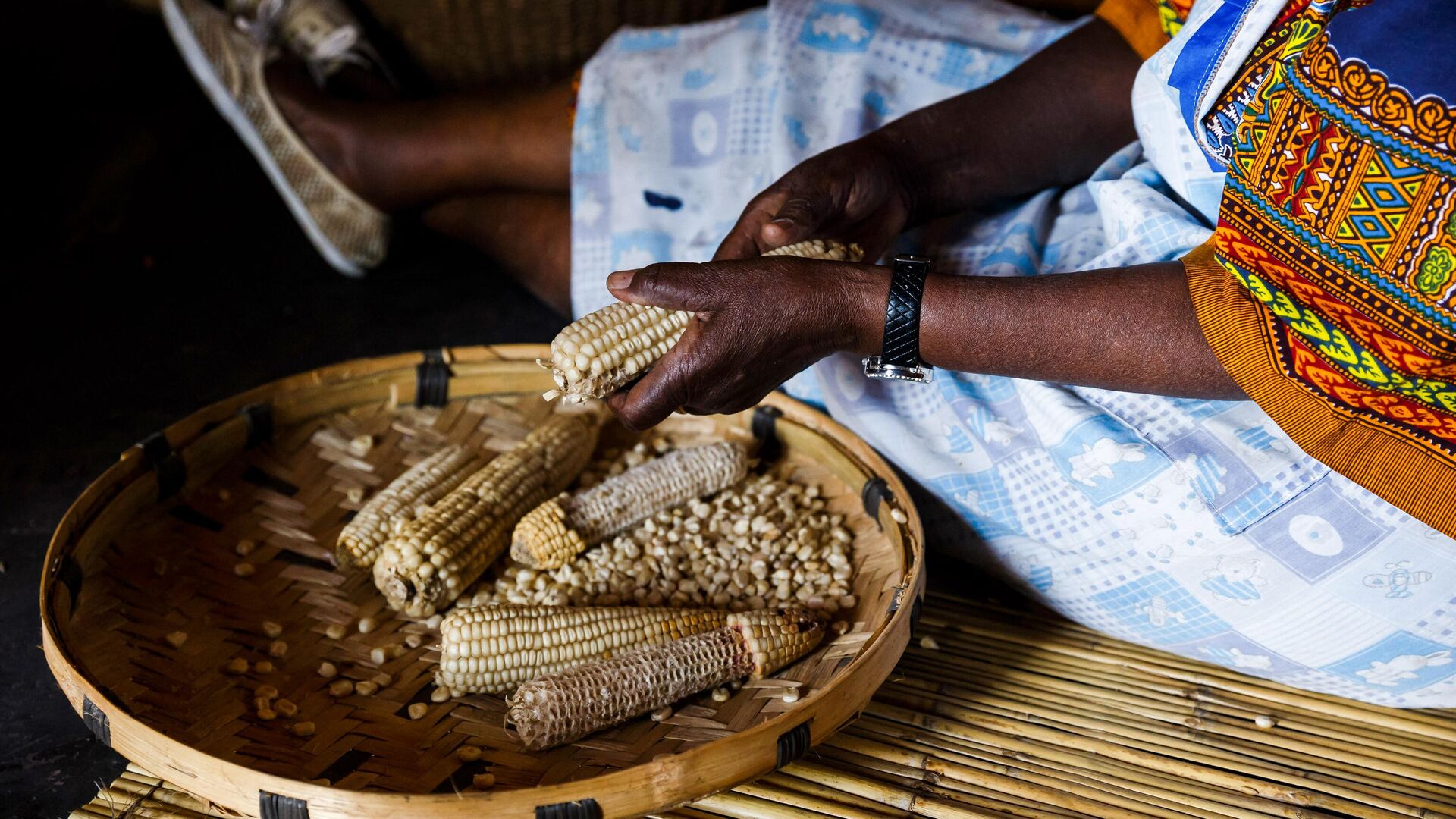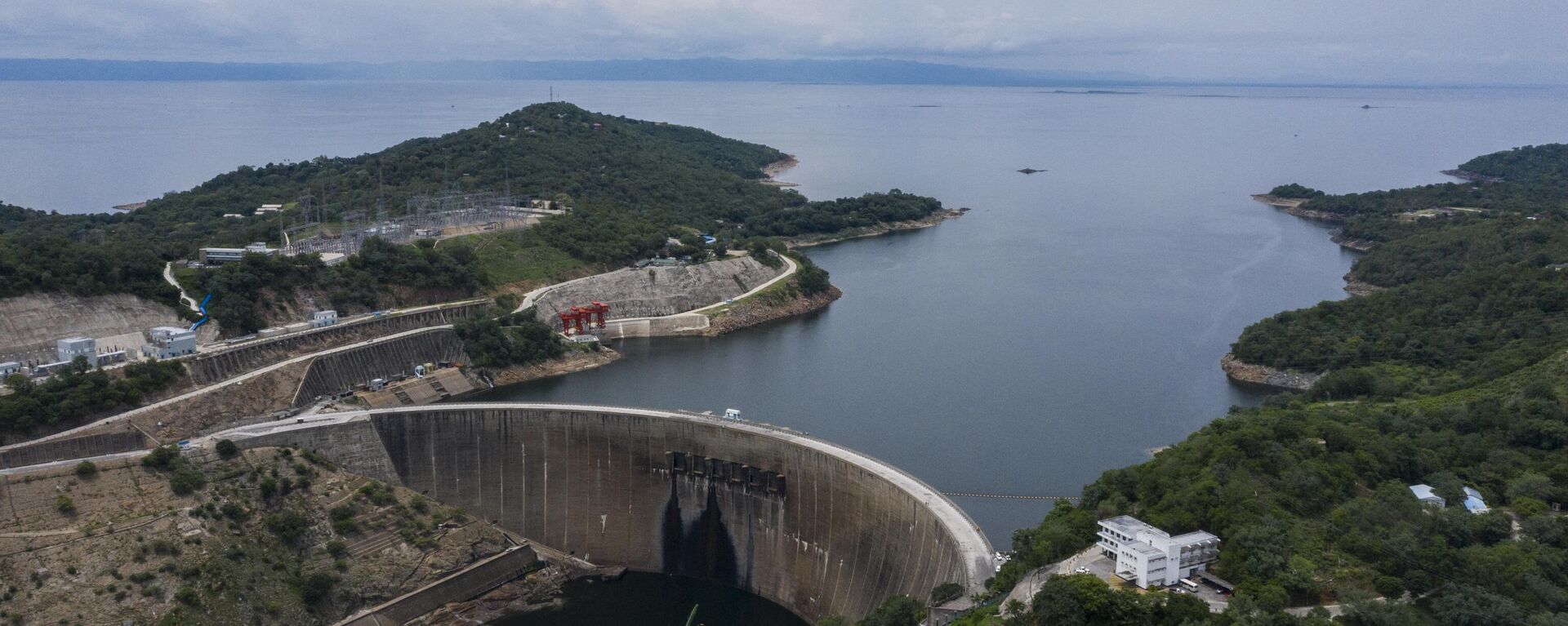https://en.sputniknews.africa/20240415/zimbabwe-reportedly-considering-importing-corn-from-brazil-as-el-nino-progresses-1066072963.html
Zimbabwe Reportedly Considering Importing Corn From Brazil as El Nino Progresses
Zimbabwe Reportedly Considering Importing Corn From Brazil as El Nino Progresses
Sputnik Africa
In Southern Africa, white corn is a primary food source and is commonly used to prepare dishes like pap and sadza. The yellow kind of corn, on the other hand... 15.04.2024, Sputnik Africa
2024-04-15T12:20+0200
2024-04-15T12:20+0200
2024-04-15T13:14+0200
zimbabwe
brazil
sub-saharan africa
south africa
zambia
malawi
southern africa
agriculture
prices
import
https://cdn1.img.sputniknews.africa/img/07e8/04/0f/1066073653_0:160:3072:1888_1920x0_80_0_0_4463e8bab491ff6264e66697b50aac7f.jpg
For the first time since 2014, Zimbabwe is considering the possibility of importing corn from Brazil as the El Nino weather pattern dries up crops in the nation and its neighbors, which is a "progressive step", the Western media reported on Monday.The drought caused by El Nino has reportedly reduced South Africa's corn harvest by a minimum of 20% and Zimbabwe's by approximately 60%. Malawi, Zambia, and Zimbabwe have officially proclaimed states of national disaster due to the significant crop failures.Typically, the three countries are capable of meeting most of their own needs, with occasional deficits being compensated by imports from South Africa, which has the largest production in the region. However, it may be challenging this year due to a decrease in South Africa's production.The price of white corn for July delivery reached an all-time high of 5,467 rand (about $287) per tonne on the South African Futures Exchange in Johannesburg on Monday due to increasing concerns over the availability of supply. It has had a 38% increase in value since the beginning of this year, according to the media.Furthermore, this year's yellow corn yield is 946,250 tonnes less than last year, making it the lowest since 2021. As for white corn, its harvest fell even more — by 2.228 million tonnes compared to 2023 — less corn was produced only in 2019.The imports are expected to incur higher costs compared to those from South Africa because they will need to be shipped by sea and will take a longer time to arrive.El Nino not only disrupts the agricultural sector of economy, but it also poses a threat to the stable supply of electricity. Last month, Zambia made a decision to implement electricity load shedding to ensure the ongoing stability of the national power grid, which was hindered by low water levels at Kariba Dam, the primary source of hydroelectric power in Zambia.
https://en.sputniknews.africa/20240308/zambia-will-implement-load-shedding-as-country-faces-severe-drought-1065456367.html
zimbabwe
brazil
south africa
zambia
malawi
southern africa
Sputnik Africa
feedback@sputniknews.com
+74956456601
MIA „Rossiya Segodnya“
2024
Christina Glazkova
https://cdn1.img.sputniknews.africa/img/07e7/0b/07/1063380906_0:0:673:674_100x100_80_0_0_79628b4d0cd9f29291a57aa13bbf9e7a.jpg
Christina Glazkova
https://cdn1.img.sputniknews.africa/img/07e7/0b/07/1063380906_0:0:673:674_100x100_80_0_0_79628b4d0cd9f29291a57aa13bbf9e7a.jpg
News
en_EN
Sputnik Africa
feedback@sputniknews.com
+74956456601
MIA „Rossiya Segodnya“
Sputnik Africa
feedback@sputniknews.com
+74956456601
MIA „Rossiya Segodnya“
Christina Glazkova
https://cdn1.img.sputniknews.africa/img/07e7/0b/07/1063380906_0:0:673:674_100x100_80_0_0_79628b4d0cd9f29291a57aa13bbf9e7a.jpg
zimbabwe, brazil, south africa, zambia, malawi, southern africa, agriculture, prices, import, electricity, climate change, economy
zimbabwe, brazil, south africa, zambia, malawi, southern africa, agriculture, prices, import, electricity, climate change, economy
Zimbabwe Reportedly Considering Importing Corn From Brazil as El Nino Progresses
12:20 15.04.2024 (Updated: 13:14 15.04.2024) Christina Glazkova
Writer / Editor
In Southern Africa, white corn is a primary food source and is commonly used to prepare dishes like pap and sadza. The yellow kind of corn, on the other hand, is mainly used as animal feed. While yellow corn is readily available worldwide, white corn is not.
For the first time since 2014,
Zimbabwe is considering the possibility of importing corn from Brazil as the El Nino
weather pattern dries up crops in the nation and its neighbors, which is a "progressive step", the Western media reported on Monday.
"This is a progressive step as regional maize [the local term for corn] supplies will be tight from the third quarter of this year into the first quarter of 2025," Wandile Sihlobo, the head economist at the Agricultural Business Chamber of South Africa, was quoted as saying.
The drought caused by El Nino has reportedly reduced South Africa's corn harvest by a minimum of 20% and Zimbabwe's by approximately 60%. Malawi, Zambia, and Zimbabwe
have officially proclaimed states of national disaster due to the significant crop failures.
Typically, the three countries are capable of meeting most of their own needs, with occasional deficits being compensated by imports from
South Africa, which has the largest production in the region. However, it may be challenging this year due to a decrease in South Africa's production.
The price of white corn for July delivery reached an all-time high of 5,467 rand (about $287) per tonne on the South African Futures Exchange in Johannesburg on Monday due to increasing concerns over the availability of supply. It has had a 38% increase in value since the beginning of this year, according to the media.
Furthermore, this year's yellow corn
yield is 946,250 tonnes less than last year, making it the lowest since 2021. As for white corn, its harvest fell even more — by 2.228 million tonnes compared to 2023 — less corn was produced only in 2019.
"I will be heading a delegation to Sao Paulo later this month to look for in excess of 300,000 tons of maize," reportedly said Tafadzwa Musarara, chairman of Zimbabwe’s Grain Millers Association, that is authorized to import corn.
The imports are expected to incur higher costs compared to those from South Africa because they will need to be shipped by sea and will take a longer time to arrive.
El Nino not only disrupts the agricultural sector of economy, but it also poses a threat to the stable supply of electricity. Last month,
Zambia made a decision to implement electricity load shedding to ensure the ongoing stability of the national power grid, which was hindered by low water levels at Kariba Dam, the primary source of hydroelectric power in Zambia.



